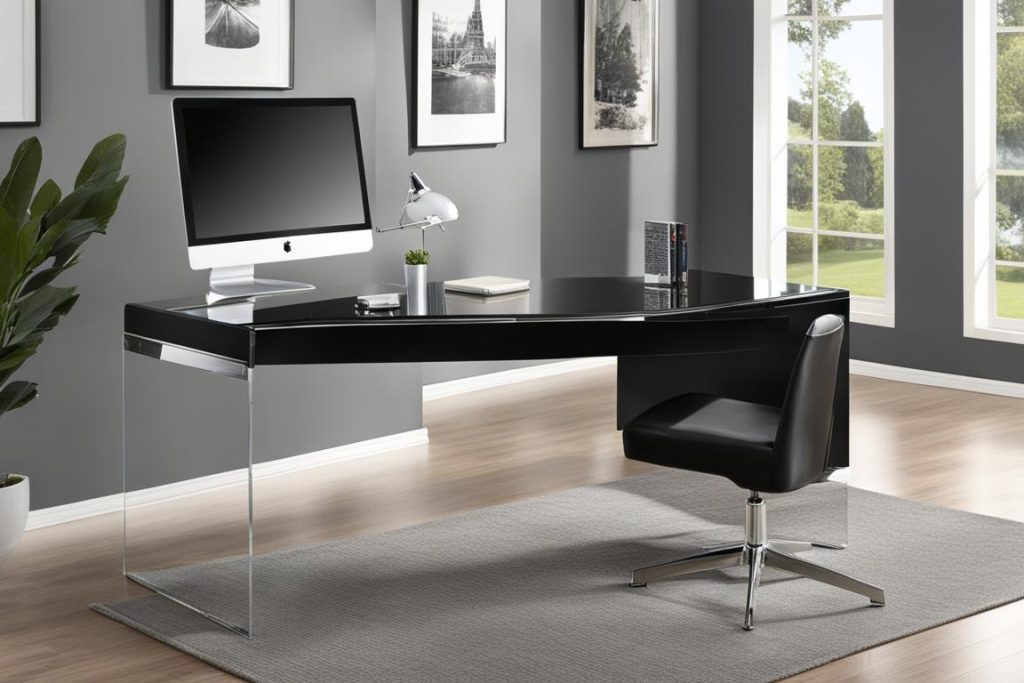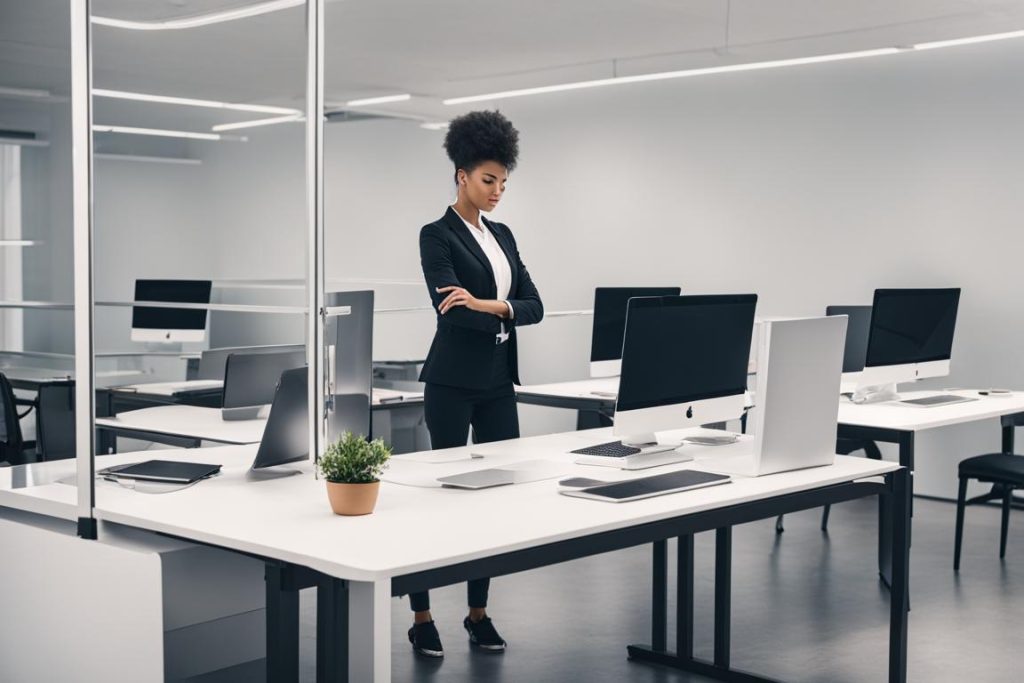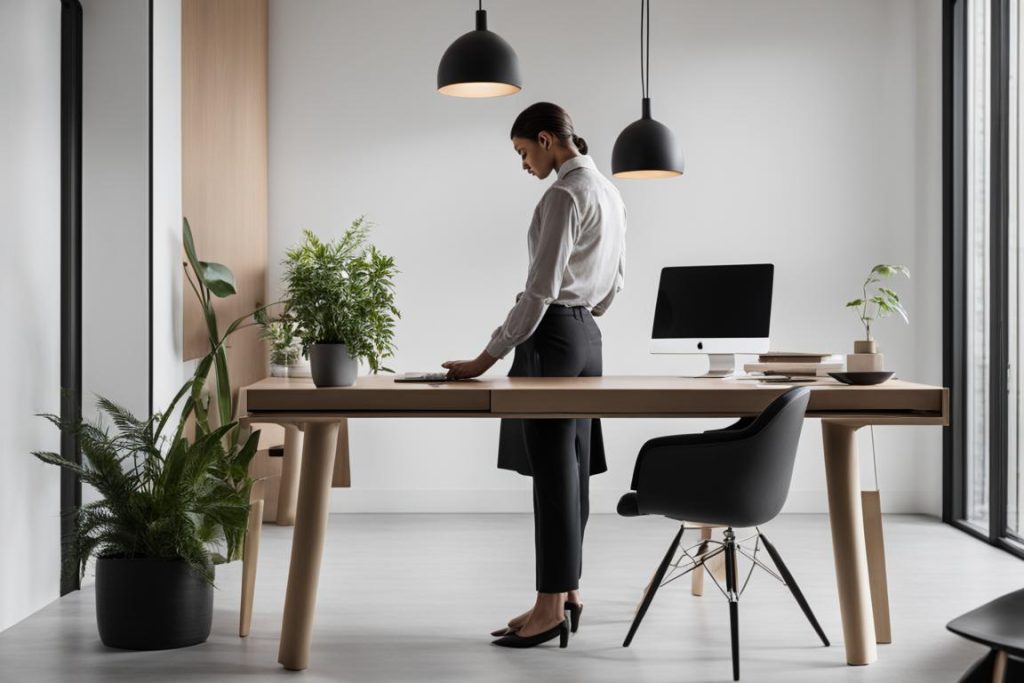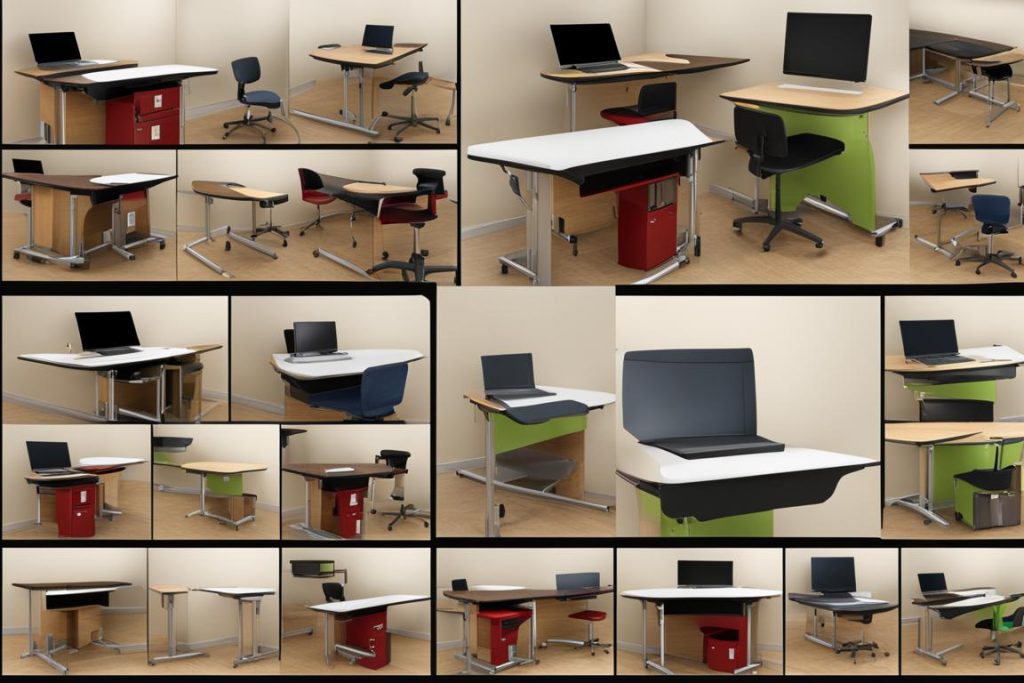Are you tired of sitting at your desk all day? Looking for a way to improve your posture and overall well-being? Well, you’re in luck! In this article, I will introduce you to the wonderful world of desks that raise and lower, also known as height adjustable desks, standing desks, or sit-stand desks.
Height adjustable desks are designed to give you the flexibility to switch between sitting and standing positions while you work. They can be adjusted to different heights using an electric motor, hand crank, or counterbalance system. This allows you to find the perfect ergonomic position that suits your comfort and productivity levels.
Standing desks have gained popularity in recent years due to the potential health benefits they offer. By reducing your sitting time and promoting better posture, standing desks can help alleviate the negative effects of prolonged sitting. They provide a dynamic work environment that keeps you active and engaged throughout the day.
So, whether you’re looking to improve your posture, increase your energy levels, or simply add a touch of versatility to your workspace, desks that raise and lower are the perfect solution for you!
Key Takeaways:
- Desks that raise and lower are called height adjustable desks, standing desks, or sit-stand desks.
- They allow you to switch between sitting and standing positions, promoting better posture and reducing the negative effects of prolonged sitting.
- Standing desks have gained popularity due to their potential health benefits, such as reducing sitting time and improving overall well-being.
- Height adjustable desks can be adjusted to different heights using various mechanisms, such as electric motors, hand cranks, or counterbalance systems.
- Incorporating a standing desk into your workspace can enhance your productivity and overall well-being.
The History and Variations of Standing Desks
Standing desks have a long and fascinating history, dating back to the times of notable figures such as Thomas Jefferson, Charles Dickens, and Winston Churchill. These individuals were known to work while standing, using specially-made desks or lecterns. Over the years, standing desks have evolved, giving rise to various styles and variations.
One interesting aspect of standing desks is their specialization for specific tasks. For example, telephone desks were designed to accommodate the use of telephones, while architectural drafting desks were tailored to meet the needs of architects and designers. This specialization allows users to have a desk that suits their specific work requirements.
Standing desks also come in different variations, with some desks being adjustable to accommodate both sitting and standing positions. These height-adjustable desks allow users to easily switch between postures, promoting better comfort and reducing the negative impacts of prolonged sitting. The height of standing desks can vary, ranging from 70 to 128 centimeters (28 to 50 inches), ensuring that users can find the perfect fit for their height and needs.
Specialized Standing Desks
In addition to the variations mentioned above, there are specialized standing desks available on the market. These desks are designed with specific functions in mind, allowing users to optimize their work experience. Some examples include:
- Music production desks: These desks are specially designed for musicians and offer features such as built-in racks for audio equipment and sufficient space for keyboards and other instruments.
- Gaming desks: Designed for gamers, these desks often come with features such as cable management systems, monitor mounting options, and ergonomic designs to enhance the gaming experience.
- Artists’ desks: These desks provide ample space for artists to work on their creations, with features such as adjustable easels, storage compartments for art supplies, and tiltable surfaces.
By catering to specific activities and professions, specialized standing desks aim to improve productivity, comfort, and overall user satisfaction.
In summary, standing desks have a rich history and offer a wide range of variations to accommodate different needs and preferences. From their origins with historical figures to the specialized desks designed for specific tasks and professions, standing desks continue to evolve to meet the demands of modern workplaces. By incorporating a standing desk into your workspace, you can experience the benefits of improved posture, reduced sitting time, and increased comfort.
Table: Variations of Standing Desks
| Type of Standing Desk | Description |
|---|---|
| Height Adjustable Desks | Desks that can be adjusted to different heights, allowing users to switch between sitting and standing positions. |
| Standing Workstations | Workstations that are designed specifically for standing, providing a dedicated space for users to work while standing. |
| Sit-Stand Desks | Desks that can be used in both seated and standing positions, offering flexibility and adaptability to the user’s needs. |
| Specialized Standing Desks | Desks that are tailored to meet the specific requirements of certain activities or professions, such as music production desks, gaming desks, and artists’ desks. |
The Impact of Standing Desks on Health
Standing desks have gained popularity in recent years due to their potential health benefits. Prolonged sitting has been linked to various health issues, such as obesity, cardiovascular disease, and musculoskeletal problems. By incorporating standing desks into the workplace, individuals can reduce their sitting time and improve their overall well-being.
One of the key advantages of standing desks is the ability to reduce sedentary behavior. Studies have shown that using a standing desk can lead to a significant decrease in sitting time, with some individuals able to reduce their sedentary behavior by up to two hours per day. By breaking up prolonged periods of sitting and alternating between sitting and standing throughout the workday, individuals can mitigate the negative effects of a sedentary lifestyle.
Another benefit of standing desks is their potential to relieve low back pain. Many individuals experience discomfort and pain in their lower back due to prolonged sitting and poor posture. By using a standing desk, individuals can change their working position and engage different muscle groups, which can help alleviate low back pain and improve overall posture.
While the use of standing desks can have positive effects on health, it’s important to note that there is no consensus on the recommended balance of sitting and standing at work. Workplace practices and individual preferences may vary, and it’s crucial to find a balance that works best for each individual. Additionally, proper ergonomics, including adjusting the desk height and using a supportive chair, are essential for maximizing the benefits of standing desks and minimizing the risk of discomfort or injury.
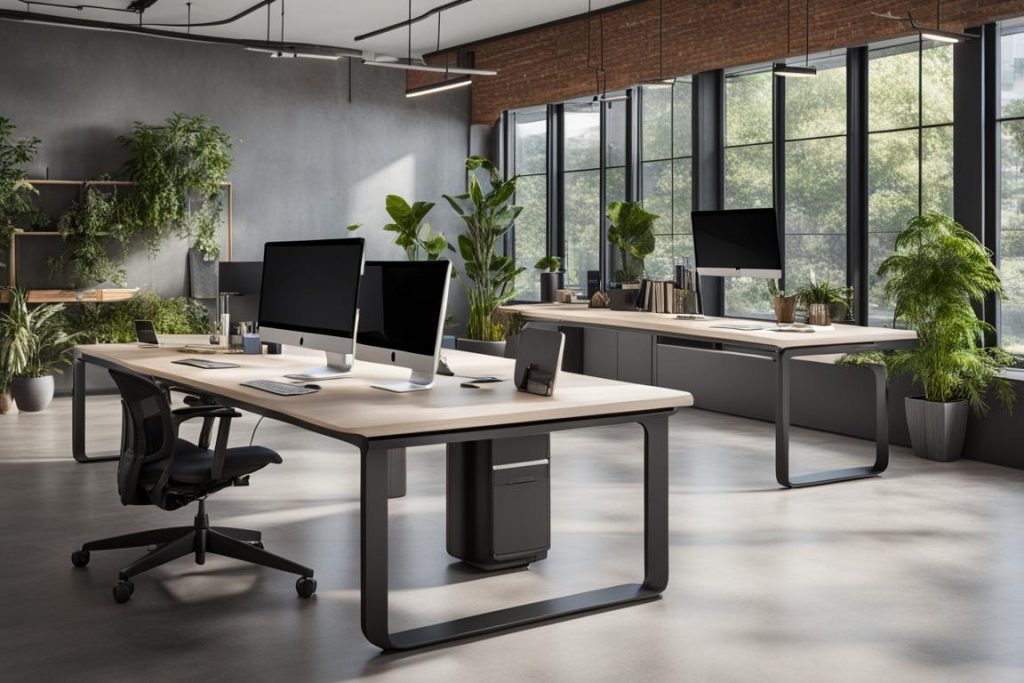

Conclusion
In conclusion, standing desks, or stand-up desks, provide a flexible and ergonomic solution to traditional seated workspaces. They offer the versatility of switching between sitting and standing positions, promoting better posture and reducing the detrimental effects of prolonged sitting.
With a long history and various styles available, including height adjustable desks, standing workstations, and sit-stand desks, there is a standing desk to suit every preference and budget.
Studies suggest that incorporating a standing desk into your workspace can have potential health benefits, such as reducing sitting time and relieving low back pain. However, there is no consensus on the recommended levels of sitting and standing at work, as workplace practices vary among different countries.
In 2023, there are several top-rated standing desks on the market, catering to different needs. Whether you choose a fully adjustable standing desk or a converter for your existing desk, integrating a standing desk into your daily routine can improve overall well-being and productivity.
FAQ
What are standing desks?
Standing desks, also known as stand-up desks, are desks that are designed for users to work while standing or sitting on a high stool.
What types of standing desks are there?
There are various types and variations of standing desks, including height adjustable desks, standing workstations, and sit-stand desks.
How do standing desks adjust in height?
Standing desks can be adjusted to different heights using an electric motor, hand crank, or counterbalance system, allowing users to switch between sitting and standing positions.
What are the potential health benefits of using standing desks?
Standing desks can potentially reduce sitting time and promote better posture, leading to improved overall health.
Who used standing desks in the past?
Notable figures such as Thomas Jefferson, Charles Dickens, and Winston Churchill were known to work while standing, using specially-made desks or lecterns.
How have standing desks evolved over time?
Standing desks have evolved with many different styles and variations available, including specialized desks for specific tasks and adjustable desks that can be used while seated or standing.
What are the recommended levels of sitting and standing at work?
There is no consensus on the recommended levels as workplace practices vary among different countries.
What are some top picks for standing desks in 2023?
The Fully Jarvis Standing Desk, Flexispot Standing Desk, Autonomous SmartDesk Pro, Autonomous SmartDesk Connect, Vivo K Series Standing Desk Converter, Mount-It Compact Standing Desk Converter, and Ergotron Mobile Desk are recognized as top picks in 2023.
Why should I consider using a standing desk?
Incorporating a standing desk into your workspace can improve overall well-being and productivity by promoting better posture and reducing the negative effects of prolonged sitting.

